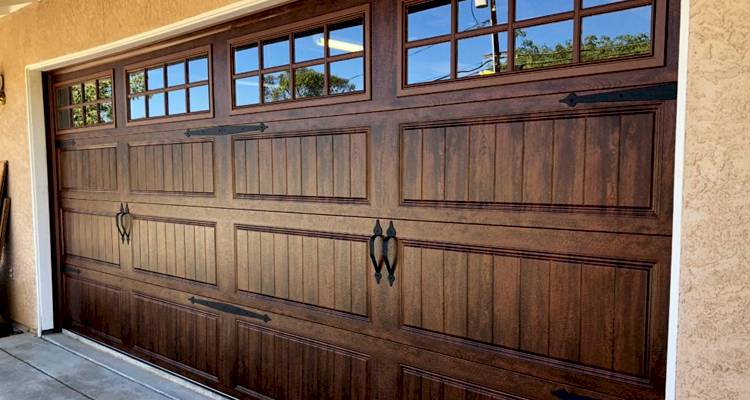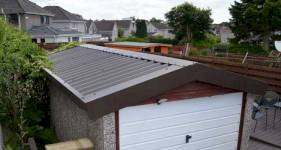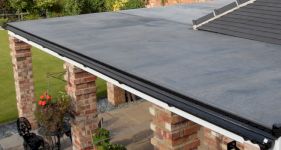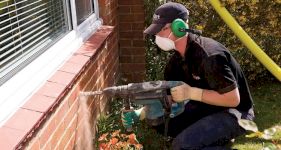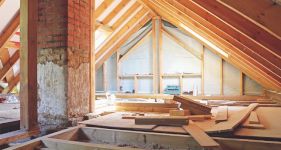Rising Damp Treatment Cost
- The average cost to treat rising damp is around £3,250.
- The job will take approximately 2 to 5 days to complete.
- A complete pricing breakdown, which includes types of treatment available, along with what such a task usually involves.
- How long the job should approximately take, and a general overview of what kind of jobs can be performed.
- How to find and hire a damp proofing specialist.
Want to know how much damp proofing costs?
In this guide, we break down different rising damp scenarios and the costs associated with treating them.
You must treat rising damp sooner rather than later. The implications of not doing so could not only be damage to your property, but also your health.
So, how much will rising damp cost to treat on average?
The cost of fixing rising damp and applying dampness treatment can be anywhere from £250 to £6,500, depending on the scale of the problem.
Our guide covers everything you might need to know about rising damp, including detailed cost overviews and what's involved with the treatment.
Ready for a quote?
We have a range of damp proofing specialists ready to offer you a free quote!
So, for more information - take a look...
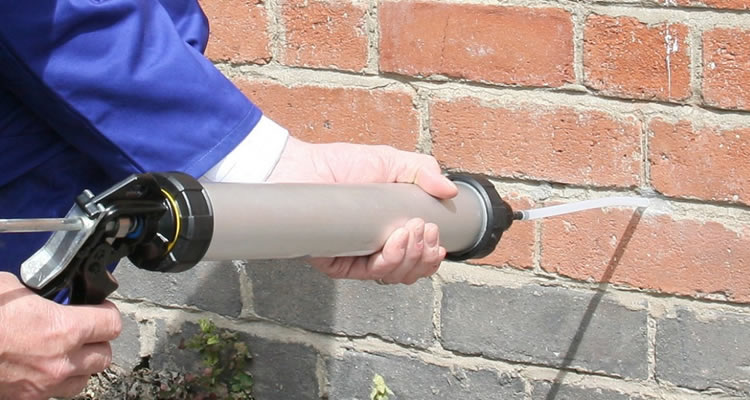
£3,250
Table of Contents
- How Much Does Rising Damp Treatment Cost?
- Additional Costs
- Supply Only Costs
- Labour Costs and Timescales
- Cost Factors of Treating Rising Damp
- What's Involved in Treating Rising Damp?
- Signs of Rising Damp
- What Causes Rising Damp?
- How Can Rising Damp be Prevented?
- What Happens if Rising Damp Goes Untreated?
- Types of Treatment for Rising Damp
- Hiring a Damp Proofer Checklist
- FAQs
How Much Does Rising Damp Treatment Cost?
Damp proofing costs range from £250 for minimal damage to £6,500 for extensive repairs. Costs vary significantly by property type due to the amount of external wall area requiring treatment.
Terraced houses typically cost £250-£1,020 as they have fewer external walls, while semi-detached properties range from £475-£2,350. Detached houses are a bigger investment at £690-£5,200 due to having external walls on all four sides requiring damp proof treatment.
The damage caused by rising damp can be extensive. For you to know that you have rising damp, you will have seen some damage, for example, stained walls. The plaster on these walls will need to be taken off and replaced.
When you investigate the rising damp, you might find damage that you couldn't see, for example, rotting floor joists. The longer you put off treating the issues, the more it is likely to cost.
There are several causes of rising damp that all boil down to issues with the damp proof course (DPC) in your home. If the DPC is just bridged by another material, this can be an easy fix. If you need to replace the DPC for your whole home, then it gets more expensive. For full damp proof costs, see our damp proof costs guide.
How do I know if I have rising damp in my lounge? I noticed my external walls are quite cold to the touch, and I have started to see mould along one wall in the lounge, where it appears to be damp.
Rising Damp Treatment Prices
The cost of treating rising damp depends on what type of damp treatment you decide to use, or what’s best for your situation. Prices vary by property size, with terraced houses at the lower end of the price range, detached houses at the higher end due to more external walls requiring treatment.
Below you’ll find some damp treatment costs:
Damp Proof Course Prices
The table below shows cost ranges for different DPC treatments. Prices reflect the full range from smaller terraced properties to larger detached homes:
| Type of DPC | Price Range |
|---|---|
| DPC injection – one wall | £560-£2,200 |
| DPC injections – whole house | £1,020-£5,200 |
| Plastic DPC – one wall | £330-£690 |
| Plastic DPC – whole house | £670-£2,300 |
| Damp proof membrane | £135 per m² |
Drainage Channel Costs
Getting a drainage channel installed is a common option for recurring rising damp issues.
This rising damp treatment cost can vary significantly based on the finish you want and the type of home you live in. The table below gives the average costs for a range of options:
| Scale of work | Price range |
|---|---|
| Channel dug along one wall | £240-£510 |
| Channel dug around the whole house | £380-£1,400 |
| Channel dug along one wall and a gravel path laid | £320-£690 |
| Channel dug around the whole house and a gravel path laid | £410-£2,250 |
| Channel dug along one wall and concrete paving stones laid | £460-£1,600 |
| Channel dug around whole house and concrete paving stones laid | £860-£4,650 |
| Channel dug along one wall and a thick concrete path laid | £490-£1,380 |
| Channel dug around the whole house and a thick concrete path laid | £980-£4,600 |
Cost Of Clearing Out Cavity Walls
This includes the cost to replace the removed bricks. The average cost assumes all the work needed to be done is within 3m of the ground.
| Number of isolated sections to be cleared | Average Cost |
|---|---|
| 1 | £165 |
| 2 | £210 |
| 3 | £240 |
| 4 | £300 |
Additional Costs
Moving and Storing Furniture
Depending on the scope of the work you will be having done, it might be necessary to remove and store some of your furniture. To have the furniture removed and stored you are looking at costs of around £85 to £110 per month.
Replacing Floor Joists
If the damp has caused your floor joists to rot, then you will need to replace them. The cost will depend on how many joists need replacing, but you can expect costs of around £290 per joist.
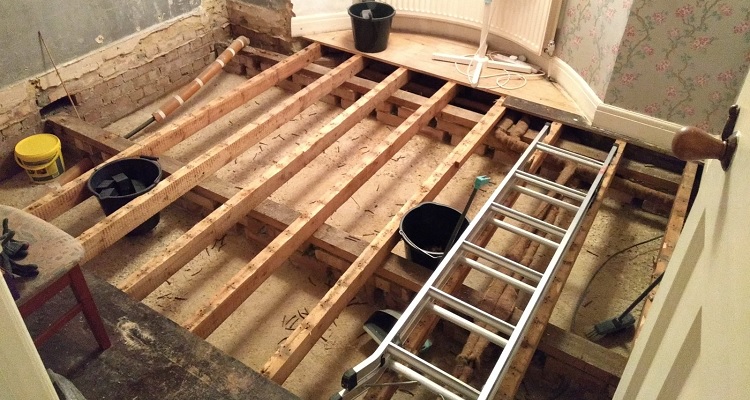
Replacing Flooring
If you’ve had to take up the floor to deal with the damp issues, then you will need to pay to replace it. The price of this will depend on the type of flooring you choose.
The average wooden flooring costs are around £260 for an average-sized room. Carpet costs are around £170, depending on the carpet and underlay you choose.
Rendering
If the damp has damaged the masonry of your home, then you might need to consider getting it rendered. You can get small areas patched, or you can get the whole house done so that you get an even finish.
The cost of patch jobs will depend on the contractor you choose. A two-storey house render costs about £5,200 for a semi-detached property, and £7,900 for a detached property.
Skirting board costs around £2.80 per metre. If you have to replace all of the skirting board in an average-sized room, then it will cost around £310 for both labour and supplies.
This could be an ideal opportunity to upgrade to heated skirting boards, which would aid in preventing your damp issue from returning. Heating skirting boards cost £45 per linear metre.
Painting and Decorating
When you are all done fixing the cause of the damp, you will likely be left with a room that is newly plastered - this means you will need to redecorate.
If you get a decorator in, you are looking at average painting prices of £320, and £450 in wallpapering costs.
You can save quite a lot of money by choosing to decorate yourself.
Waste Disposal
If there is a lot of plaster or rotted timber to remove, then you will likely have to pay for waste removal. Depending on the size of the job, this may involve hiring a skip. The average skip hire cost is around £180.
Supply Only Costs
There are a few treatment options that you could carry out on your own. Most options should be done by a trained professional.
Here are the DIY costs of fixing rising damp:
| Treatment Option | Supply Cost |
|---|---|
| DPC Injection Cream | £6 – £8.50 per 100ml |
| Anti-mould/moisture paint | £28 - £35 per tub |
Labour Costs and Timescales
The largest cost involved in treating rising damp will be the labour costs. It is always worth checking your chosen contractor's 'per day rate'. This is because there are often surprising extras that can take up time and will push your final cost up.
These average costs include the labour to remove old plaster and replace it where necessary. The duration assumes that two people are working on the job the whole time.
| Treatment | Duration | Average Cost |
|---|---|---|
| DPC injection – one wall | 2.5 days | £900 |
| DPC injections – whole house | 5 days | £1,850 |
| Plastic DPC – one wall | 0.5 day | £275 |
| Plastic DPC – whole house | 1.5 days | £975 |
| Installing damp proof membrane on one wall | 2 days | £675 |
| Installing damp proof membrane on floor | 2 days | £675 |
| Channel dug along one wall | 2 days | £360 |
| Channel dug around the whole house | 5 days | £680 |
| Clearing out one section of cavity wall | 2 hours | £130 |
Cost Factors of Treating Rising Damp
There are a lot of factors that affect the cost of getting rising damp treated, which is why the costs can vary so much. Here's what you need to keep in mind when budgeting:
Severity of Damp
The longer the damp has been left untreated, the more damage it will have caused. If previous occupiers have ignored or covered up signs of damp, then you might find that a lot of damage is hidden under the surface.
Once you start investigating, you might find a lot of problems.
If there has been rising damp in multiple locations for a long time, the damage can be extensive and can begin to affect the structure of your home.
However, if the damp is limited to a small area and is found quickly, the effects can be reversed by just drying out the affected area.
Type of Treatment
The type of treatment you choose is going to depend on the cause of your rising damp. Some issues are easy to fix - they might just involve moving some earth or taking off some plaster or render.
Other treatments might require you to remove a lot of internal plaster and inject a new DPC. The more labour and time-intensive treatments cost significantly more.
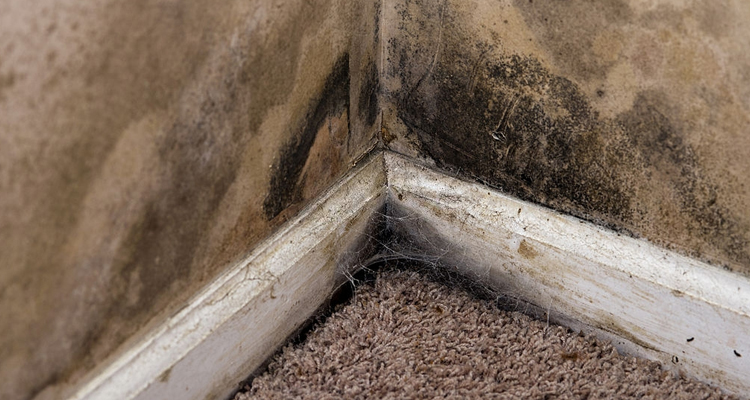
Size of Area That Needs Treating
Depending on what has caused the rising damp, it might be limited to a small area. For example, if an increased soil level is the cause, it might just be against one section of a wall.
This means the damage is not widespread, and it will be cheap to fix. In the case of a missing or damaged DPC, you are looking at issues along each external wall, which will multiply how much the whole job costs.
Replacing Rotting Timber
If the damp has got into the timbers of your home, then you will have to pay for the materials to replace the rotten wood, as well as the skills of a carpenter.
These costs can rapidly rise, and the more wood that has been affected, the more the damp proofing price will rise.
I have soil/mud appearing at the brickwork which runs along the side of my living room. Inside, my wall has cracked along the skirting board and has pulled away from the wall. Do I have rising damp, and is this now structural?
What's Involved in Treating Rising Damp?
Installing a Physical DPC
If you have an existing DPC, then this will be removed in sections, and the new plastic DPC inserted.
If you don’t have a DPC, then bricks will be removed at the level where the DPC needs to be added. They will then be relaid with the DPC layer inserted between them.
Installing a Chemical DPC
The chemical DPC will be injected into both your interior and exterior walls. The exterior walls are just drilled directly into.
The holes are made about 15cm above ground level. The holes are around 10mm in diameter.
The spacing of the holes will depend on the specific chemical mix used. The chemical DPC is then injected into the walls.
The injection will either be done by hand or with a pump. Again, this depends on the exact type of DPC used.
The holes will then be coated with a waterproof sealant for best results.
For interior walls, the plaster will need to be removed from the walls up to the level of the DPC. The injection process is then the same as for the external walls. Once the DPC is installed, the walls will be treated with a waterproof render, and then re-plastered.
Installing a Drainage Channel
A trench is dug alongside the wall, usually only a spade’s width in size. The trench should drop to at least 4 courses of bricks below the DPC. The ditch is then filled with pebbles.
The pebbles should be no smaller than golf balls.
The ditch should be sloped towards a drain or a soakaway. Concrete can be laid at the bottom of the trench to help the water runoff.
Clearing out Cavity Wall
This is a fairly straightforward job. Around 3 bricks will be removed from the exterior wall, and the cavity is then raked out.
Once clear, the bricks are replaced.
Signs of Rising Damp
Rising damp can cause a wide range of effects, so it is worth being aware of all the signs that signal it's a problem for you.
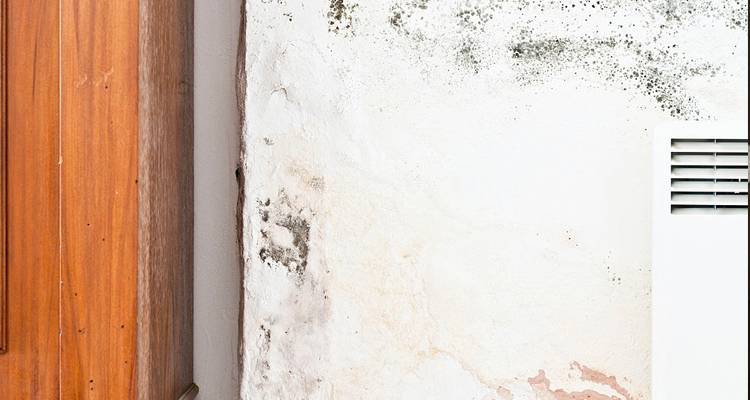
Some of the effects can be hard to identify as being caused by rising damp, specifically, rather than any other form of damp. Depending on how and where the damp is rising, you may see some or all of these signs.
- Yellow/brown tide line above the skirting board as damp carries minerals up the wall.
- Salt deposits on walls that are often white in colour and can be brushed off the surface.
- Damp floor spots that come and go but repeatedly appear in the same location.
- Black spots of mould located on the lower parts of your walls.
- Musty smell associated with damp in your home
- Rotting timber affecting floor joists, floorboards, and skirting boards.
- Wet plaster that becomes darker in colour or feels damp and unusually cold to the touch.
- Peeling wallpaper that begins to peel off at the joins or creates bubble-like appearance.
- Discoloured wallpaper where the lower sections are a different colour.
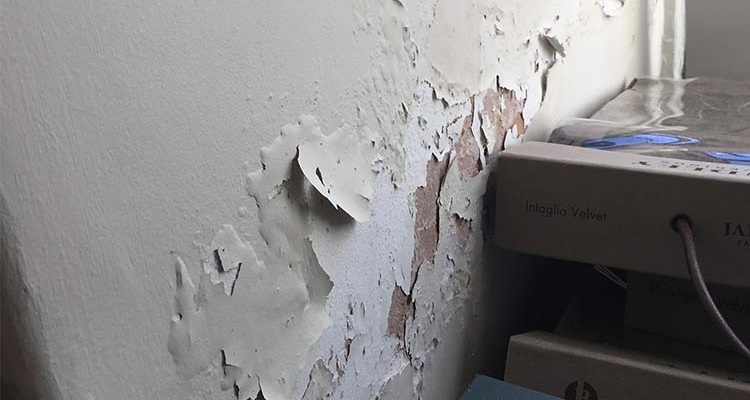
I've got some mild rising damp identified on internal walls. The builder has slabbed directly to the wall, and the damp proofer advised that the wall should have pressure-treated timber battens before the board went on. Will putting the board to the wall cause more damp, as there is no cavity for the wall to breathe?
What Causes Rising Damp?
Rising damp is the name given to the damp that creeps up from the floor. It generally starts with the foundations.
The water travels up through the flooring and walls. There will always be some moisture in the ground below your house.
Homes should be built with a damp-proof course (DPC). This is a waterproof layer that is built into the lower part of the wall.
Rising damp is when the moisture can enter your home and cause damage. There are several reasons why this might start to happen:
Rising Groundwater
Groundwater is just the water that is in the ground.
The level at which this water sits can change. If there has been a lot of rain, then the groundwater can rise significantly.
If the groundwater rises too far, then it could become a problem. It might rise above the DPC and thus get into the house.
If this is the cause of your rising damp problem, then it might come and go depending on the weather.
Older Building
The type of damp proof course used has changed over time. The type that is present in your home will depend on when it was built. Older methods include using a layer of slate, bitumen, or even hessian.
Some older buildings may not have any DPC, or the one they have might have become damaged or ineffective over time.
Homes built before 1875 may not have a DPC. Homes built in and around 1875 might have a DPC, but it could be poorly installed.
Slate DPCs were used in Victorian homes, but these tend to fail as a result of movement, which causes the slate to crack.
Newer buildings use plastic or chemical DPCs. These are more resistant and should last much longer.
Leaking Pipework Under the Flooring
If there is a leaking pipe under the floor, there will be excess water. If this water rises above the DPC, then it will leach into the walls and continue climbing.
Even small leaks can end up having a devastating effect on your home. If you notice any signs of a leak that you can’t locate, you should get someone to investigate the problem.
This is often covered by home insurance so it will only cost the amount of your excess on your policy.
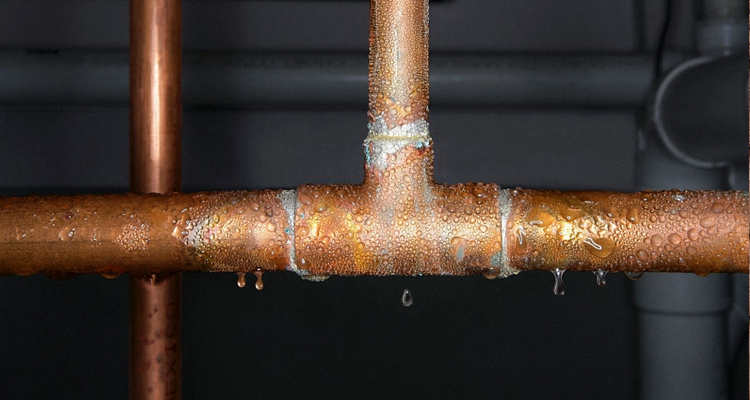
Non-existent DPC
If the house is missing a DPC, then there is no protection against the damp. The water can move freely up the walls.
There may be no DPC in some older homes. It became compulsory for new homes to be built with a DPC in 1875.
Houses built before this might not have a DPC. Any built after should have one, although early DPCs were sometimes poorly installed.
Debris in Wall Cavity or Subfloor
If there is debris inside the wall cavity or beneath the floor, this can let the water up the walls. It can act as a bridge for the water, which can then bypass the DPC.
Inappropriate Insulation
If you put insulation into your walls, then you need to choose breathable insulation. If the insulation causes moisture to collect, then it can cause damp and condensation problems.
Breathable insulation will allow any moisture to evaporate and will prevent any water from seeping into the walls.
It can also be a problem if the insulation is fitted badly. If the insulation overlaps the DPC, then it can provide a bridge for water to get past the waterproof layer into the house.
Plaster/render Overlapping DPC
If any material overlaps the DPC, then it will provide a route for water to enter your home. It is not uncommon for plaster or render to have been taken too far down a wall.
This can happen if homeowners have done some DIY or if there was not enough care taken by the original builders.
Landscaping
If you have had landscaping done around your home, this could be the cause of rising damp. If any materials are piled up around the walls of your house, it can give damp a route into your home. Any soil or rocks that come above the line of the DPC will let moisture into your home.
Patios can also be to blame. If the patio comes above the DPC, it can act as a bridge for the water.
Any permanent features on the outside of your house should stop three courses of brick below the DPC. Any higher than this, and you significantly increase the risks of rising damp.
How Can Rising Damp be Prevented?
Rising damp can be expensive to fix. Not only do you have to stop the damp from entering, but you also have to fix the damage it causes.
There are a few steps you can take to protect your home from the effects of rising damp, but there is not much you can do to stop it from happening. You just need to be aware and catch it early.
Check DPC Regularly
You should be able to see the DPC from the exterior of your house. There should be a layer of different material visible in the masonry. It will be about 15cm above the ground.
Every now and then, you can walk the perimeter of your home and just check that the DPC is unbroken all the way around. This is an easy way to get an indication of the state of your DPC.
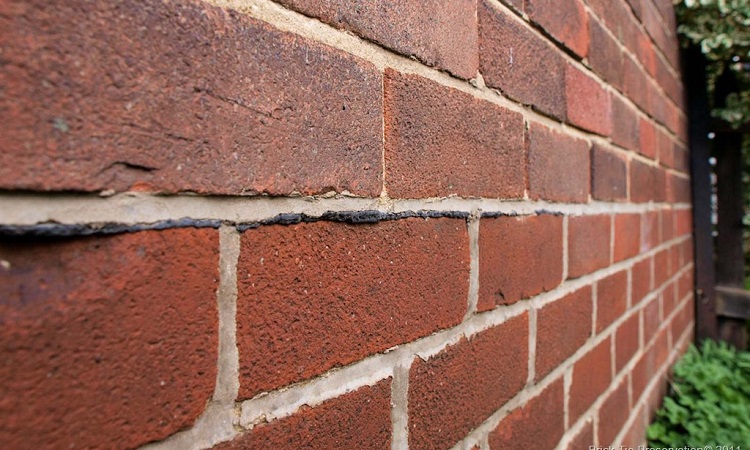
Replace and Repair Damp-proof Membrane
An alternative to a DPC is a damp-proof membrane. You often find these under concrete slabs. It is just a different type of DPC. If the membrane becomes damaged over time, it will need to be replaced.
The price of the membrane will be around £135 per m². The fitting costs will depend on where it is located and what work is needed to access it.
Air Out Home
If you see any signs of damp in your home, whatever the cause, then you should take steps to ventilate your home.
By letting your home ‘breathe’ it will allow the wet air to leave your home and give the walls and floor a chance to dry out. This will slow the damage being done by the rising damp.
Heat Every Room
If you have rooms in your home that are not often used, then it is tempting to turn off the heating and shut them up long term. However, this will allow any damp issues to grow. Turning on the heating will drive the moisture out of the walls and floors.
It doesn't need to be on all the time, but making sure you heat every room in your home every two weeks will prevent the worst of the damage from occurring.
If you can see the signs of rising damp, then keep the heating on in the affected areas until you have taken action to prevent the damp getting in.
Check Any Leaking Pipework Under the Floor
If you have any reason to suspect that there is a leak under your floors, you should investigate immediately.
Most home insurance policies will cover the cost of getting a leak investigated, so you will only have to pay the excess on your policy. If left unchecked, leaking pipes can cause a lot of expensive damage.
Check Drains
Keeping your drains clear will prevent them from backing up. If they do become backed up, the water level can rise above the DPC. If this happens, then you may, on occasion, have rising damp.
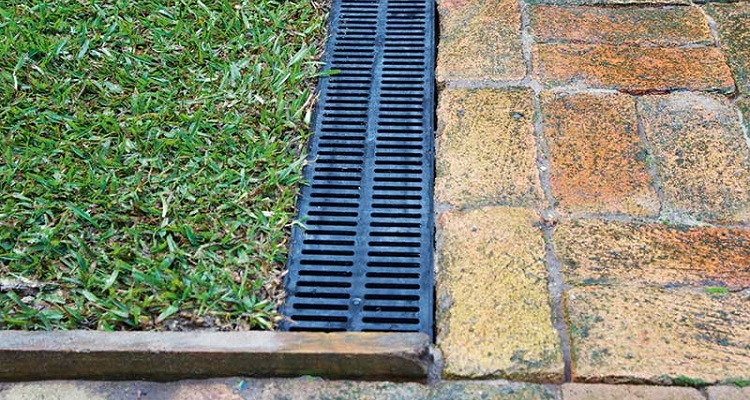
Check Exterior Masonry
You will be able to spot signs of rising damp on the exterior masonry of your home as well. It might even show up here first depending on how it is getting in.
Check to make sure that no organic matter or debris is collecting against your walls. If material piles up over the line of the DPC, then it will act as a bridge and allow water into your home.
I have a 2-bed terraced house, and have rising damp on all 4 walls - although it’s worse on the wall where the chimney was removed. Any idea how this will be tackled?
What Happens if Rising Damp Goes Untreated?
Rising damp can cause extensive damage to a property. If caught early, the damage may be mostly to the appearance of the house.
For example, you might need to redecorate or replace skirting boards. The longer that rising damp is left untreated, the more damage it can cause.
Untreated, rising damp can begin to cause structural damage to your home. If it gets into the floor joists, it can rot them away. Over time, it will continue to climb up your walls, and in extreme cases, can reach upper floors. If this happens, it could jeopardise the electrics in your home.
If you have rising damp, you will need to repair or replace the DPC. The longer you leave it untreated, the more you will have to spend to fix the damage. Repair costs could start from as little as £250, and rise as high as £22,000.
Types of Treatment for Rising Damp
There are a lot of suggested treatments for rising damp. Which one will work best for you will depend largely on the cause of your rising damp issue.
Some ‘treatments’ will only address the damage caused by the rising damp, but they will not prevent the problem from returning. We’ve listed a few treatments below and have included the damp proof course cost, too:
Install DPC
If you don’t have a DPC or yours has failed, then you will need to get this done. Replacing an old DPC is possible but costly and a specialist job. The cost will vary depending on how many walls are affected and what sort of house you live in.
For one wall on a terraced house, it will cost around £330. For the whole of a detached house, it will cost £2,300.
Pros
- ✔ Highly effective
- ✔ Long-Lasting
Cons
- ✖ Time Consuming
- ✖ Expensive
- ✖ Not possible with some types of brickwork
Chemical Injection
If you are missing a DPC or yours is ineffective, then you can inject a damp-proof chemical into both the interior and exterior walls. This creates a DPC within the bricks.
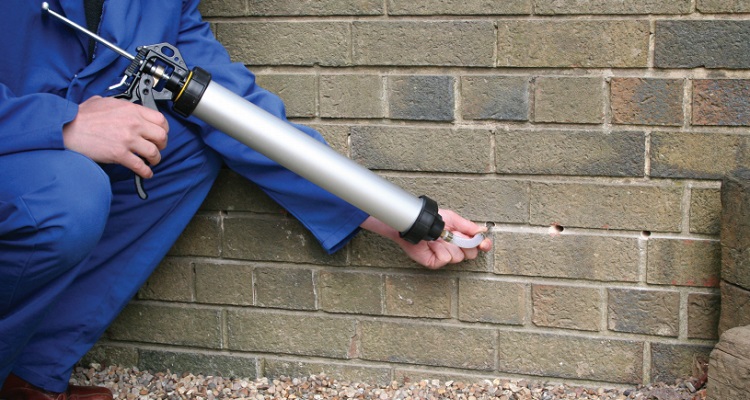
There are a few different types, but they are all installed in the same way and have similar costs. The cost will depend on the number of walls in need of treatment and the type of house.
For one wall on a terraced house, it will cost around £560. For the whole of a detached house, this damp course cost around £5,200.
Pros
- ✔ Highly effective
- ✔ Long-lasting
Cons
- ✖ Interior walls will need to be re-plastered
- ✖ Skirting boards will need to be replaced
- ✖ Not possible in all types of masonry
Repointing
If the exterior wall of your home is showing signs of damp, then repointing can make it look new again. However, it will not fix the cause of the rising damp and will need to be done again if the root cause is not addressed.
The cost will depend on the area in need of repointing, but for a single wall that only needs repointing at ground level, it will be around £350.
Pros
- ✔ Removes the external signs of damp
Cons
- ✖ Doesn’t fix the problem
Painting
If the rising damp has discoloured your plaster, then you can get anti-mould and anti-moisture paints to apply. The paint is easy to apply, and will cost around £35 per tub.
Pros
- ✔ Easy
- ✔ Cheap
Cons
- ✖ Won’t fix the problem
Damp-proof Membrane
If you have a concrete floor and are getting damp spots on the floor and walls, then you may need to replace or install a damp-proof membrane.
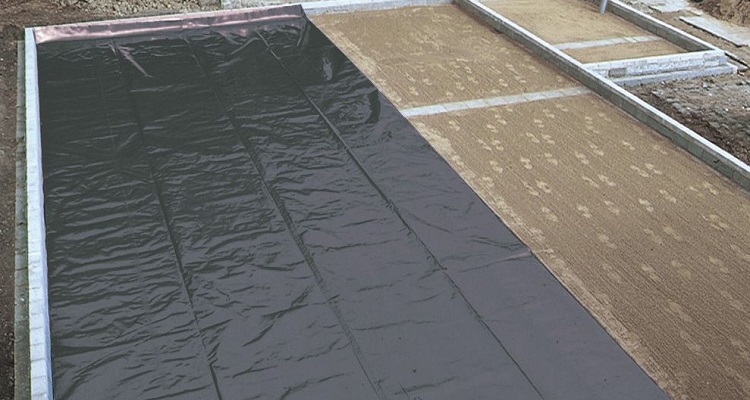
The cost of the membrane will be around £135 per m². The fitting costs will depend on where it is located and what work is needed to access it.
Pros
- ✔ Effective
- ✔ Long-lasting
Cons
- ✖ The flooring may have to be taken up
- ✖ Dirty job
Un-bridging DPC
If you have exterior landscaping that is bridging the DPC, then you will need to remove it. It may also be worth laying paving around your home that will not collect and hold moisture. For example, instead of having soil against your home, lay a gravel path.
The costs for this will depend on how much landscaping needs moving and what you will replace it with. Costs will vary between £240 and £4,600.
Pros
- ✔ Can be a quick and easy job
- ✔ Effective
Cons
- ✖ Depending on the finish chosen can become expensive
Build a Drainage Channel
If you have paving against the house that is above the DPC and you don’t want to remove it, then you can install a drainage channel. It is an option with any treatment and can be a good idea if you often see standing water outside your home.
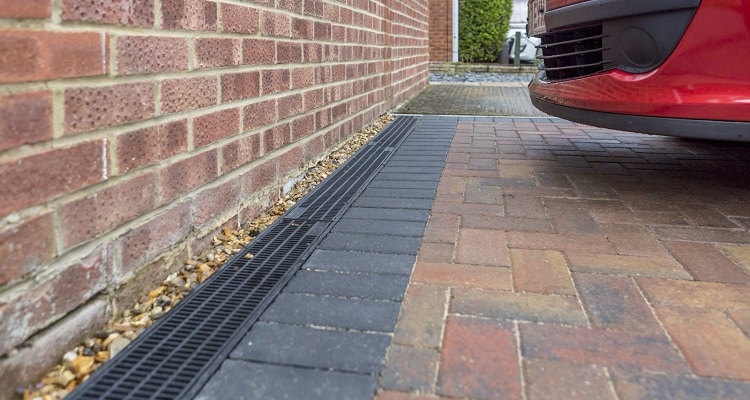
Costs will depend on the area needed to be dug, and the ground make up. You should expect costs in the range of £1,000 for a drainage channel around the whole house.
Pros
- ✔ Effective for given causes of rising damp
- ✔ No interior work is needed
Cons
- ✖ The finished look is not for everyone
Clear Out the Wall Cavity
If the problem is being caused by debris in the wall cavity, then you will need to remove this.
This involves taking out the external bricks, removing the debris and rebuilding the external wall. It will cost around £165.
Pros
- ✔ Easy job – a confident DIYer could do it
Cons
- ✖ May only be part of the problem
My outbuilding has developed cracks in the exterior render and interior plaster over the winter, and in my house, I think I have rising damp. Do I get one person to assess the work?
Hiring a Damp Proofer Checklist
Because the causes of damp can be hard to discern, you need to be able to trust your contractor. Here are some things to consider when picking your damp proofer.
- Look for a contractor with a lot of positive reviews, or who is happy to put you in touch with previous clients. If people have been ripped off, they will not be shy about saying so.
- Make sure that you choose a contractor that you can communicate well with. There are lots of hidden issues that can arise with this kind of work, so you need to work with someone who will be upfront with you about problems, solutions and costs.
- Ask about a guarantee. Any good damp proofer will be willing to offer some sort of guarantee about their work.
FAQs
How Much Does a Damp-Proof Course Cost?
What Is a Damp-Proof Membrane?
How Do I Know If I Have a Damp-Proof Course?
If you are having trouble seeing it, look for an airbrick. The DPC should be directly beneath this.
If your home has had an injected DPC, you should be able to see the injection points all along the wall.
Does Home Insurance Cover Rising Damp?
Why Do Some People Say That Rising Damp Is A Myth?
If you have damp problems, you should get a damp survey done. This will make sure you are treating the real cause of your problem, which may be rising damp. Make sure to get multiple damp survey cost quotes.



